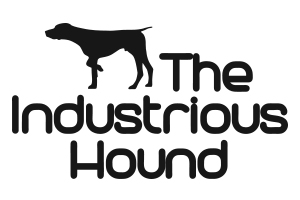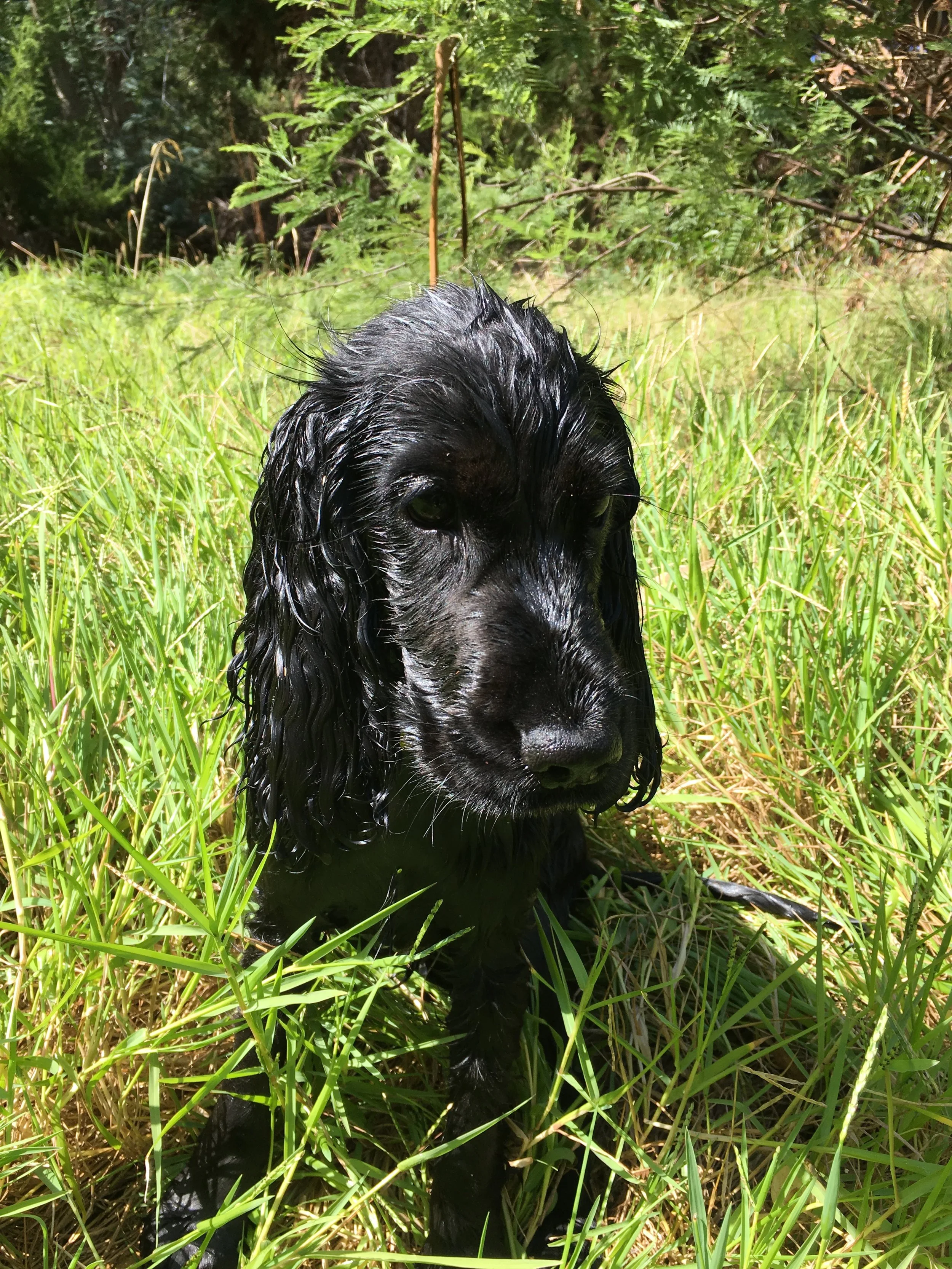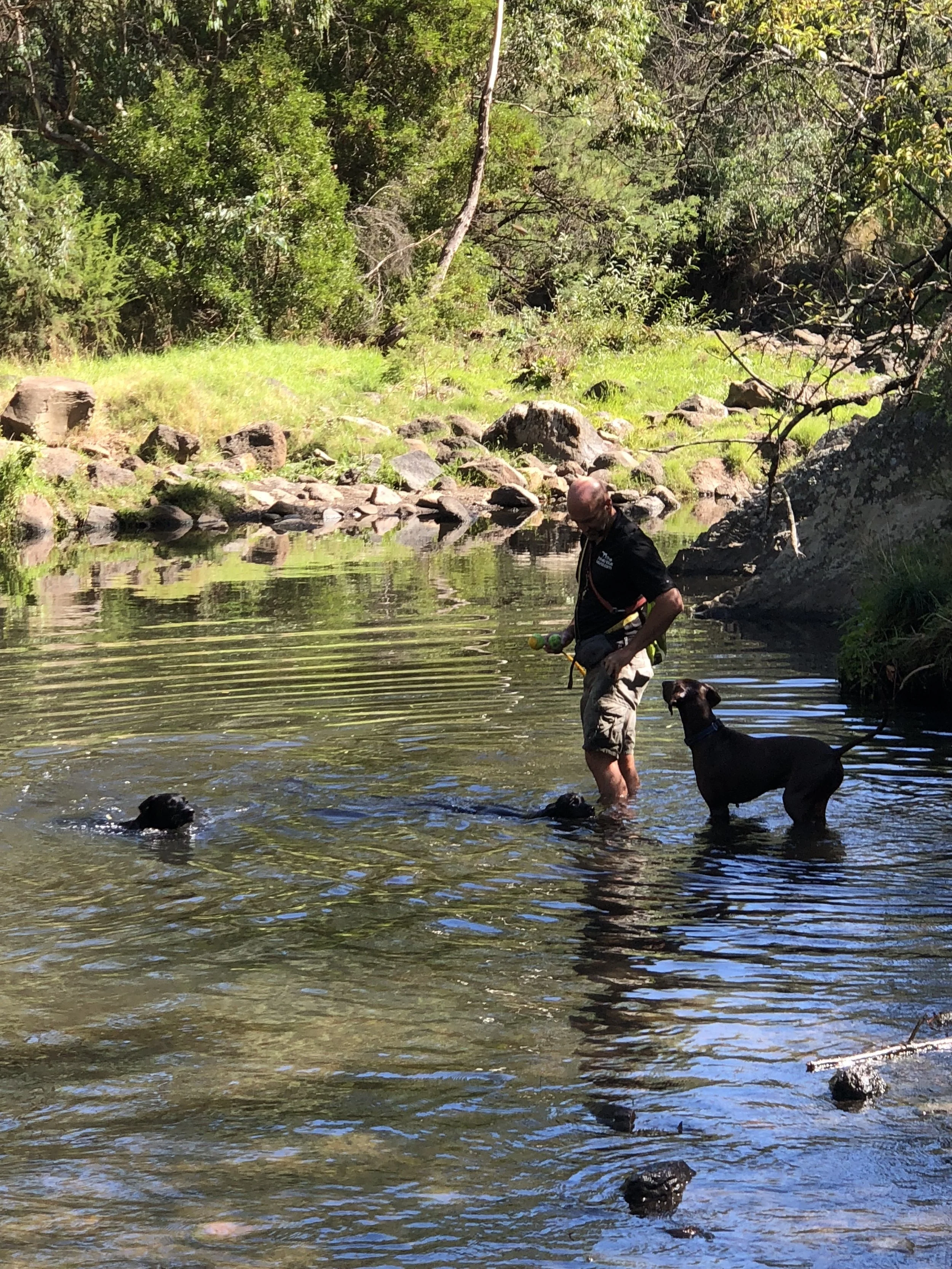Reward, punishment & choice
Successfully training dogs is based on a sophisticated understanding of dogs and humans, of what makes them tick, and how to draw out the best in each.
We often get undesired behaviour by unknowingly rewarding behaviours we don't want. But we can quickly get the behaviour we do want by consciously applying an understanding of reward, punishment and choice.
Reward
Most of us are familiar to some extent with reward-based training and positive reinforcement.
Most people learn, and unquestioningly use, positive reinforcement to teach a dog to sit, for example.
When we use positive reinforcement to teach 'sit', we typically use a food treat to manipulate a dog into a position, or wait for a coincidental sit, and when we get the desired behaviour we pop the food in the dog's mouth.
Over a few repetitions, we can establish a relatively reliable link between the treat and the noise 'sit'.
In time we can make the link increasingly 'abstract' until we might need only to use a hand gesture, or even one day just a raise of the eyebrows perhaps! We are simply creating the links from one event to another.
A deeper understanding of reward thinks about the behaviour we acknowledge. The foundation concept is that we get what we reward. What we focus on expands!
From that foundation concept, we can see that reward can be nice snack, or a favourite toy, or even - in fact, most commonly and almost always unconsciously - acknowledgement by more subtle means, like talking, looking or touching the dog.
Punishment
Typically, many would consider a punishment as some sort of unpleasant outcome of a undesired action.
It often seems unquestioningly logical to chastise verbally or physically, but 'punishment' is an intriguing event whose effect is much more complex and far-reaching.
If we think of a simple cause and effect - put your hand over a flame. The flame burns. Undesired action = immediate and consistent negative outcome.
But let's think about a relatively common but more complex scenario for dog owners: the very common use of nose collars.
The effectiveness of nose collars is based on restraining, or forcing and compelling an action, and on making the dog uncomfortable when his movement is undesirable.
'Choke chains' are seldom used as intended.
When you 'compel' or force behaviour - as with the use of harnesses and nose collars - the effectiveness of the negative reinforcement relies on its use every single time the undesired behaviour happens. This form of training attempts to disincentivise a behaviour by showing the dog what it must not do rather than positively reinforcing the preferred behaviour.
With negative reinforcement, the dog complies with the desired behaviour by learning to avoid the negative stimulus - learning by trial and painful error what it must not do.
When the means of restraint or punishment is removed, the dog soon works out that the means of repressing the undesired behaviour are gone and makes other choices, which will most likely be to do what the collar, harness, shout or smack was intended to 'correct'.
Humans also behave in this way. Think of how we drive: - we exceed speed limits because we know that the chances of getting caught are slim. But when we know of a speed camera, we adjust our behaviour to avoid the fine. When we believe there is no risk of a fine, our real behaviour resumes. We would only never speed if we were consistently punished every time we went over the limit. But this only works for people who care about the fine!
What is 'punishment' in training?
Dogs - and people - would often rather have negative feedback than no feedback at all and so the true opposite of reward is "nothing" - no feedback. Ignoring.
It doesn't mean you do nothing, of course. It simply means you don't acknowledge the behaviour you don't want.
Think about when dogs jump up: they are shouted at (acknowledged) for the jump, but ignored when they have four paws on the ground. Instead consistently offer no feedback for the jump, and instead positively reinforce four paws on the ground.
Apply these concepts to what a client recently said: "But how can my shouting at the dog and squirting it with water be rewarding!?"
In this case, the owner assumed that the dog was not 'rewarded' by the acknowledgement of shouting or indeed 'enjoyed' the squirted water, and that the stimulus the dog received from the undesired behaviour - in this case barking at the TV - was of greater relative value than either any negative or positive reinforcement.
The choice to continue barking was the dog's preferred option, and the dog easily manipulated the owner into the dog's game! Dog:1, Owner:0.
Choice
Dogs have self-determination and can exercise choice. Modern approaches to training integrate the important element of 'choice'.
'Choice' allows the dog to decide between at least two options, one of which is the preferred option - ideally preferred by you and the dog! The 'secret' is knowing how to use reward to influence choice.
A part of dealing with recall, for example, is to increase your relative value over all other stimuli for the dog so that the dog might think: 'of all the options open to me, I choose to return to you, because the reward is greater than sniffing this'; or perhaps, 'is the right 'choice' to get to the park not to pull, or do I get what I want by pulling?
In the first video, see how I begin to create a positive association with the sound of the whistle, and then reward the dog.
In the second video, see how the links get longer between the positive association of (1) the whistle being blown when the dog is at a distance, (2) the dog returning to me, and (3) the dog receiving additional positive reinforcement when I give a food reward at the recall point (me).
In the final video, see how I combine these concepts. Count how many times I reward, 'punish' or create choice in just a short 30 seconds of a game; and what am I rewarding and how?
If you want help with reward and choice in your relationship with your dog, click on the button below, or browse this site for more information and to find out about training.




